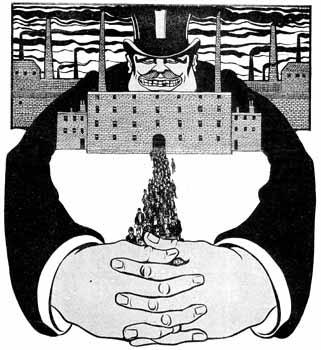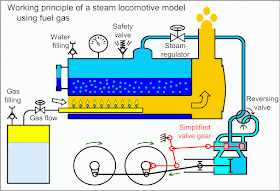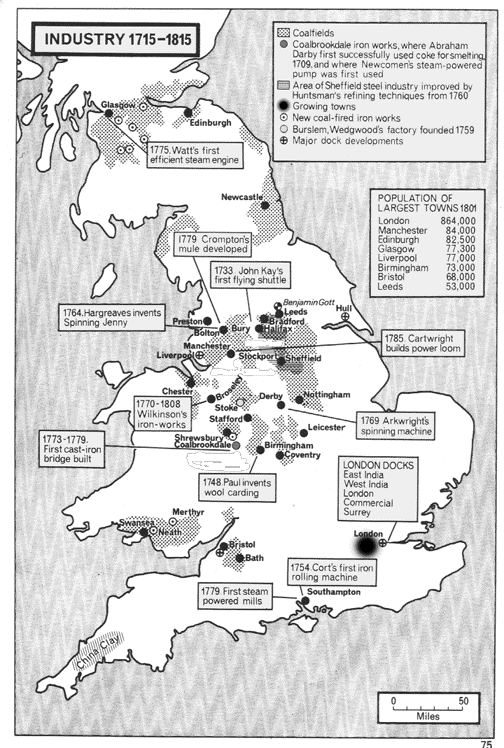Hi guys. It's Lorena. Today in Social Sciences we've studied the Industrial Revolution.
Source: https://www.google.es/url?sa=i&rct=j&q=&esrc=s&source=images&cd=&cad=rja&uact=8&ved=0ahUKEwi-gaeg8u_KAhXLQBQKHfT-DjUQjRwIBw&url=%2Furl%3Fsa%3Di%26rct%3Dj%26q%3D%26esrc%3Ds%26source%3Dimages%26cd%3D%26cad%3Drja%26uact%3D8%26ved%3D0ahUKEwi-gaeg8u_KAhXLQBQKHfT-DjUQjRwIBw%26url%3Dhttps%253A%252F%252Fen.wikipedia.org%252Fwiki%252FIndustrial_Revolution%26psig%3DAFQjCNFjDKK1gCmR9BUsatNWbW0MMNkRug%26ust%3D1455286344747556&psig=AFQjCNFjDKK1gCmR9BUsatNWbW0MMNkRug&ust=1455286344747556
We've started the lesson writing the index of Unit 4: The Industrial Revolutions and the labour movement. It was divided into three parts.
The first one is the Industrial Revolutions. It's again divided into several parts: definition and stages, the demographic and Agricultural Revolution, the 1st Industrial Revolution and the Transport Revolution, the development of industrial capitalism, the 2nd Industrial Revolution and the consequences of the Industrial Revolution.
The second part was called the new class-based society.
The third and last part we were going to study was the Labour movement. It was divided into the first workers' protests, the labour movement ideologies and the International Workingmen's Association.
After being award of how much content we had to study thanks to the revolutions happend in the human history, we've said that it's better that people don't revolt, just to avoid studying.
Paqui's said that revolutions lead to big changes. Sadly, most of them aren't pacific.
We're supossed to be in the 3rd Industrial Revolution, or at least this is what Paqui has told us. She's also said that there are many people who don't think so.
Source: https://www.google.es/url?sa=i&rct=j&q=&esrc=s&source=images&cd=&cad=rja&uact=8&ved=0ahUKEwjarJ_68-_KAhWKvBQKHc6kDuUQjRwIBw&url=http%3A%2F%2Fwww.escuelapedia.com%2Flas-tres-revoluciones-industriales%2F&bvm=bv.113943164,d.d24&psig=AFQjCNHhImn742n_LKLgAdf1zgCajfImWQ&ust=1455286768208104
Paqui's explained the 2nd Industrial Revolution superficially. After that, she's written the first point of the unit. The main ideas I've understood were:
- A revolution is a deep change
- The Industrial Revolution changed the way of producing products.
- It also changed society, economy and people's lives.
- It had two stages.
Source: https://www.google.es/url?sa=i&rct=j&q=&esrc=s&source=images&cd=&cad=rja&uact=8&ved=0ahUKEwiavque-e_KAhXFVRQKHckKCrQQjRwIBw&url=https%3A%2F%2Ffactoriahistorica.wordpress.com%2F2011%2F02%2F22%2Fla-segunda-revolucion-industrial%2F&bvm=bv.113943164,d.d24&psig=AFQjCNEygoGkhMHUQR8QW_B6Az_3p9I0fw&ust=1455288216834410
The stages of the Industrial Revolution were:
- The first Industrial Revolution: It happend in Great Britain in the third part of the 18th century. It extended throughout the first half of the 19th century.
- The second Industrial Revolution: It spanded from the UK to all over the world. It happend in the 2nd half of the 19th century, and ended in 1945.
Spain industrialized in the 2nd Industrial Revolution, which was also the origin of Imperialism (the next unit)
Source: https://www.google.es/url?sa=i&rct=j&q=&esrc=s&source=images&cd=&cad=rja&uact=8&ved=0ahUKEwiPvrXd-e_KAhUCWhQKHYzDAeIQjRwIBw&url=http%3A%2F%2Fcontenidosdigitales.ulp.edu.ar%2Fexe%2Fhistoria2%2Frevolucin_industrial.html&bvm=bv.113943164,d.d24&psig=AFQjCNEygoGkhMHUQR8QW_B6Az_3p9I0fw&ust=1455288216834410
The origin of the Industrial Revolution was the increase of population, there were less wars and more hygiene, with vaccines in medicine and a better diet, so it caused a reduction in mortality and high birth rates. Life expectancy increased so there were more demand for all kind of products.
Source: https://www.google.es/url?sa=i&rct=j&q=&esrc=s&source=images&cd=&cad=rja&uact=8&ved=0ahUKEwjz1cnT_e_KAhVJtxQKHU3JD6cQjRwIBw&url=http%3A%2F%2Fwww.economist.com%2Fblogs%2Ffreeexchange%2F2013%2F09%2Feconomic-history-0&bvm=bv.113943164,d.d24&psig=AFQjCNEQRFa1QUuLnWpLwRq88q8GFufsew&ust=1455289390728892
Source:
https://flipchartfairytales.files.wordpress.com/2012/11/screen-shot-2012-11-04-at-10-52-12.png
In the Ancien Régime, there were high birth and mortality rates, but in the Industrial Revolution mortality rate decreased, while birth rate continued to be high. Life expectancy was very short until the Industrial Revolution.
After this explanation, we've done a small break and we've talked about the Spanish population. We've said that Spain has lost a lot of people. There are less births, more mortality and people are going abroad to improve their life, work or whatever. There wouldn't be enough young people to maintain the pensions. Well, this is something I don't care because I'm one of the ones who are going to life abroad.
After that, Paqui's written a scheme for demographic revolution. We've completed it orally. Cuases, changes and consequences. Not that difficult.
For homework, we have to do a similar scheme for agricultural revolution. For those who forget everything! Don't say I haven't warned you about what we have to do today!
At the end of the lesson, Paqui has distributed the exams. Everybody was very nervous.
After seeing our exams, we've watched a video where a man was explaining the industrial revolution on a whiteboard, just as we have to do in our projects.














































